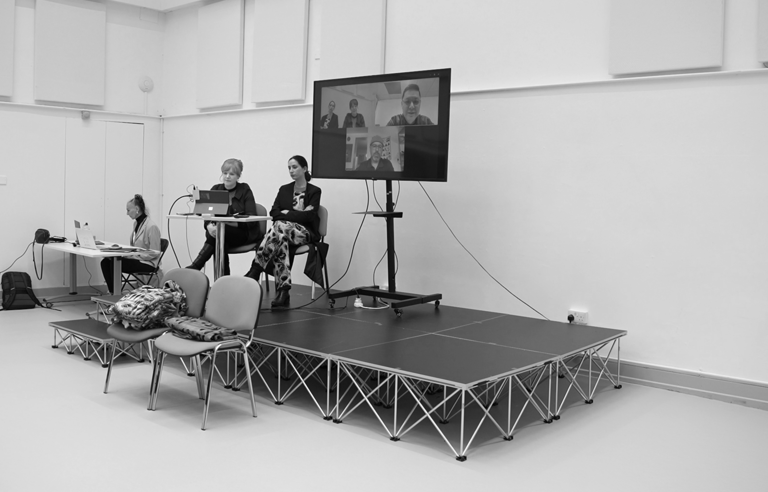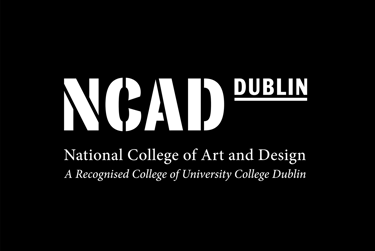Cloaking Symposium and Workshop The Bank, Digital Hub Dublin.
CLOAKING is a national art activism and research initiative created by artist and NCAD Lecturer Elaine Hoey and Technologist in Residence at the Digital Hub, Dunja Skoko, PhD. The project invited artists from all disciplines to take part in a Cloaking Symposium and Workshop on March 27th 2025. This event responded to the urgent ethical and creative challenges that artists face due to the rapid rise of problematic uses of generative artificial intelligence.
WHAT IS CLOAKING?
The concept of cloaking is an emerging critical framework that sits at the intersection of critical theory, tactical media, artistic activism, political philosophy, and technological intervention.
Artistically
Cloaking is shaped by traditions of refusal, camouflage, visual interference, and the politics of concealment found in tactical media, cyberfeminist practices, queer aesthetics, and anti surveillance art. These strategies approach visibility not as a default but as a site of contestation, often used to disrupt or redirect systems of recognition and capture.
Philosophically
It draws from Édouard Glissant’s concept of opacity, the right to remain unknowable and irreducible within systems of surveillance and categorisation. This is expanded through Judith Butler’s writing on legibility and performativity, and Michel Foucault’s analyses of power, biopolitics, and disciplinary regimes.
Technologically
The term has gained traction more recently within computer science and AI ethics, particularly through the development of tools such as Glaze and Nightshade, created by Ben Zhao and collaborators. These tools use adversarial techniques to prevent generative AI models from copying artists' work online. This practical form of cloaking connects closely to the idea of data poisoning in machine learning.
WHY CLOAKING?
Cloaking can be understood as a response to the rise of AI driven surveillance and governance. Today, images are scraped without consent, faces are scanned and profiled, and creative work is absorbed into algorithms that erase authorship. Cloaking resists this extraction. It disrupts facial recognition, poisons AI training data, and interrupts the gaze of the machine.
The aim is to critically engage with the ethical implications of AI and explore its role within contemporary art practice, examining strategies employed by artists, designers, and scientists to navigate and resist its extractive nature, while also delivering a practical workshop on Glaze and Nightshade that equips artists with both the critical understanding and technical skills needed to protect their work from unauthorised use and copying. by generative AI systems.
Supported by NCAD and The Digital Hub, with additional Research funding from SATLE






All videography and Images By Juno Claffey Hegarty/ Alannah Davey.
Many thanks to : Dr Renée Koch Teaching & Learning Development Officer, NCAD . Dr Feargal Fitzpatrick Head of Fine Art Media, NCAD. Fine Art Media Dept students and the staff of the Digital Hub Development Agency
CLOAKING SYMPOSIUM AND WORKSHOP
The event combined keynote presentations, in-depth Q&A discussions, and a practical workshop, co- facilitated by 2nd year NCAD Fine Art Media Students, where participants were introduced to digital cloaking tools designed to help protect their artwork from AI scraping.
The symposium featured three internationally recognised guest speakers:
Professor Ben Zhao (University of Chicago), a leading computer scientist and developer of digital cloaking technologies for artists such as Glaze and Nightshade.
Rachele Didero (MIT Tangible Media Group), a designer and researcher specialising in adversarial fashion and anti-surveillance design strategies.
Zac Blas, an artist and writer whose practice explores the intersection of tactical media, AI technology and power.